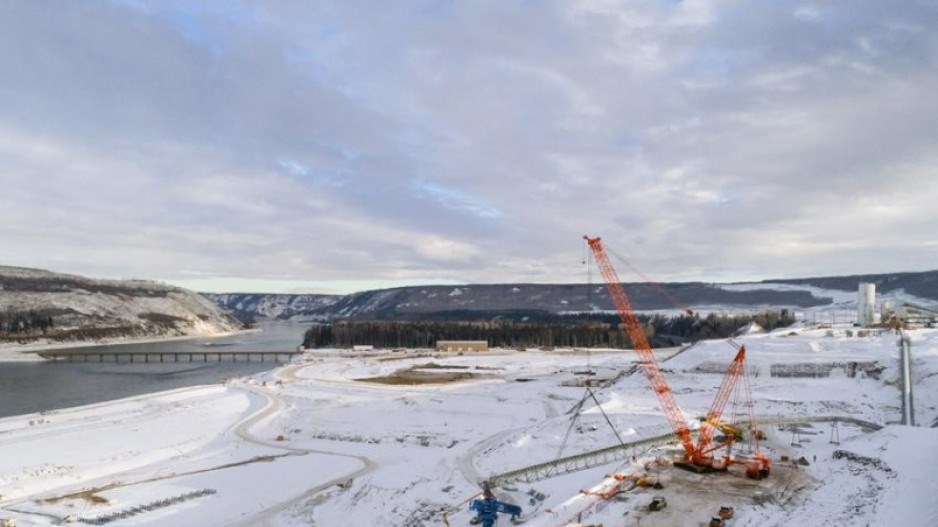British Columbia’s Chief Electoral Officer has approved in principle an initiative petition application attempting to stop construction of the $10.7-billion Site C dam, Elections BC announced Thursday.
The petition will be issued to proponent Ion Delsol Moruso, a resident of Duncan, on July 3, according to Elections BC.
“This initiative petition application is the eleventh to be approved since the Recall and Initiative Act came into force in 1995,” Keith Archer said in a news release May 3.
In the summary of his initiative, Moruso is looking to stop the dam's construction citing a federal-provincial review of the project in 2014, and a BC Utilities Commission review in 2017. He proposes a draft bill titled the Site C Dam Project Cancellation Act.
"The draft Bill states that the May 2014 Joint Federal-Provincial Review Panel report on the project was found to have unsupported claims and procedural inconsistencies, and that a November 2017 BC Utilities Commission report concluded that the project is not needed for future energy power in British Columbia," the summary of the petition states.
Starting July 3, Moruso will have 90 days to canvass and collect signatures of at least 10 per cent of the registered voters in each of British Columbia’s 87 electoral districts. Registered voters as of July 3 can sign the petition once, and only for the electoral district in which they are registered.
The deadline to apply to be an opponent of the initiative is June 4.
Individuals or organizations who intend to oppose the initiative, conduct initiative advertising, or canvass for signatures must be registered with Elections BC.
Construction on the dam began in summer 2015 after the BC Liberals approved the then $8.7-billion project in December 2014.
In December 2017, NDP Premier John Horgan said Site C construction would continue after his government undertook a four-month utilities commission review of the project. In giving its approval, the NDP government revised the dam's projected cost to $10.7 billion.
In March 2018, BC Hydro signed a $1.6-billion contract with the AFDE Partnership of Aecon Constructors, Flatiron Constructors Canada, Dragados Canada, and EBC Inc., for the civil works portion of Site C's powerhouse, penstocks, spillways, and power intakes.
The partnership is expected to mobilize to the dam site outside Fort St. John this spring.
There were 2,086 workers employed in the dam's construction as of February 2018, according to BC Hydro's latest labour statistics about the project.
How do petitions work?
Any registered voter can apply to have a petition issued to gather support for a legislative proposal, according to Elections BC.
But getting the petition approved by voters and in front of legislators is an onerous task. From Elections BC:
The petition must be signed within the 90-day canvassing period by at least 10% of the registered voters in each electoral district in the province.
To sign the petition, voters must be registered on the date the petition was issued. The proponent must comply with the initiative financing provisions.
If these requirements are met, the Chief Electoral Officer must send a copy of the verified petition and draft Bill to a Select Standing Committee on Legislative Initiatives.
The Select Standing Committee must meet within 30 days of receipt of the petition and draft Bill.
From their first meeting, the Committee has 90 days to consider the legislative proposal and either table a report recommending introduction of the draft Bill, or refer the initiative to the Chief Electoral Officer for an initiative vote.
Initiative votes are scheduled every three years. If required, the next initiative vote will be on September 26, 2020.
Individuals and organizations may apply to be an opponent to an initiative vote within 30 days after the day on which notice of the vote is published in the Gazette.
For an initiative vote to be successful, the majority of registered voters in the province must vote in favour of the initiative and more than 50% of registered voters in at least two-thirds of the electoral districts in the province must vote in favour of the initiative.
If successful, government must introduce the initiative Bill at the earliest practical opportunity.




